Valley of the Kings
It is between Louxor and Assouan, the valley of the Nile, also called valley of the Kings and Queens, I went on a cruise. Between these two towns, many tombs of Pharaohs are scattered over the valley.
Felucca. These sailing boats are many on the Nile. The Egyptians use them to cross from a bank to another, or to carry goods to the market.
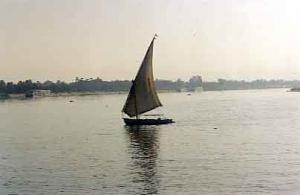
Tourists move either by taxi or by barouche. Here they wait for the customers. It is necessary to haggle over because the prices are never the same –according to who the client is!
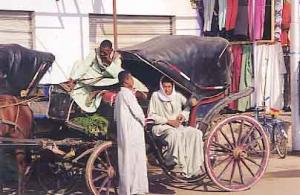
An old Egyptian plays the “rababah”, a wooded violin painted and made of camel's skin.
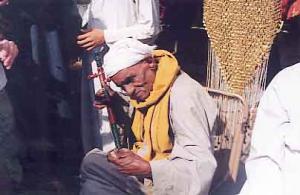
In a street of Louxor. At the time of the day when it is the hottest, people stay at home. In this house, they talk and gossip, or have a nap. The women seldom go out, and when they do, they are seen wearing a veil.

During my stay, it was Ramadan, an important period for the Moslem religion. People do not eat until the sunset. When the night falls, the “muezzins” announce it from the top of the mosques. Then the Egyptians bring out mess tins to eat anywhere they are. On the market, people stop working, sit on the ground and eat with their fingers.
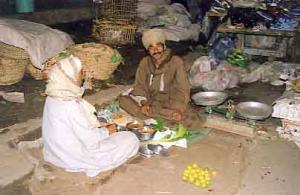
In a small village on the edge of the Nile, two women have prepared bread. Before cooking it they put the bread outside to make the dough rise. They often have a cow that belongs to them, in order to feed the children.

At the market of Aswan: the sale of goats.
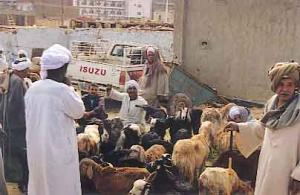
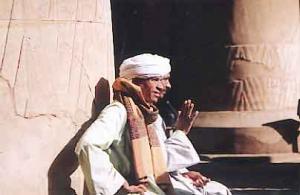
Two guides are waiting for the tourists in front of the temple of Edfou. It is a temple built in honour of the god Horus. It took 200 years to build it.
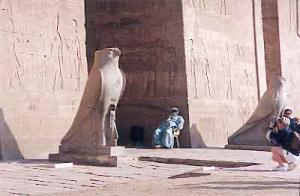
Horus, the ancient god with a head in the shape of a falcon, is the son of Osiris. He reigns on the world of the livings.
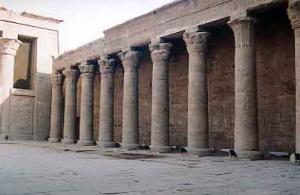
On the island of Philae, the temple of Isis, the mother of Horus, was built. She is also the goddess of the Nile. When the big dam was built on the Nil, the temple was endangered to be swallowed up. To avoid that, they moved it to another island: Agilka, 300 meters higher.


